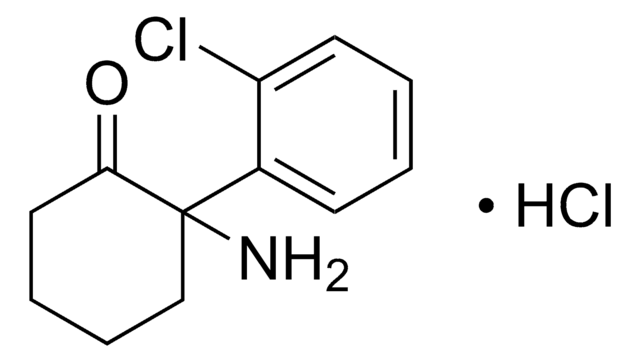E0276
EPPS
BioPerformance Certified, suitable for cell culture, ≥99.5% (titration)
Synonyme(s) :
4-(2-Hydroxyethyl)-1-piperazinepropanesulfonic acid, 4-(2-Hydroxyethyl)piperazine-1-propanesulfonic acid, N-(2-Hydroxyethyl)piperazine-N′-(3-propanesulfonic acid), HEPPS
About This Item
Produits recommandés
Qualité
BioPerformance Certified
Pureté
≥99.5% (titration)
Forme
crystalline powder
Technique(s)
cell culture | mammalian: suitable
Impuretés
endotoxin and Total Aerobic Microbial Count, tested
pH
7.3-8.7
Plage de pH utile
7.3-8.7
pKa (25 °C)
8.0
pKa
8
Pf
237-239 °C (lit.)
Solubilité
H2O: 25 g + 50 mL, clear, colorless
Traces de cations
heavy metals (as Pb): ≤5 ppm
λmax
A290 at ≤0.1 (C=33% w/w)
Application(s)
diagnostic assay manufacturing
Chaîne SMILES
OCCN1CCN(CCCS(O)(=O)=O)CC1
InChI
1S/C9H20N2O4S/c12-8-7-11-5-3-10(4-6-11)2-1-9-16(13,14)15/h12H,1-9H2,(H,13,14,15)
Clé InChI
OWXMKDGYPWMGEB-UHFFFAOYSA-N
Vous recherchez des produits similaires ? Visite Guide de comparaison des produits
Description générale
Application
Caractéristiques et avantages
- BioPerformance Certified, high-quality level (400), ensures reliable and consistent results.
- Suitable for mammalian cell culture techniques
Code de la classe de stockage
11 - Combustible Solids
Classe de danger pour l'eau (WGK)
WGK 3
Point d'éclair (°F)
Not applicable
Point d'éclair (°C)
Not applicable
Équipement de protection individuelle
Eyeshields, Gloves, type N95 (US)
Certificats d'analyse (COA)
Recherchez un Certificats d'analyse (COA) en saisissant le numéro de lot du produit. Les numéros de lot figurent sur l'étiquette du produit après les mots "Lot" ou "Batch".
Déjà en possession de ce produit ?
Retrouvez la documentation relative aux produits que vous avez récemment achetés dans la Bibliothèque de documents.
Notre équipe de scientifiques dispose d'une expérience dans tous les secteurs de la recherche, notamment en sciences de la vie, science des matériaux, synthèse chimique, chromatographie, analyse et dans de nombreux autres domaines..
Contacter notre Service technique





